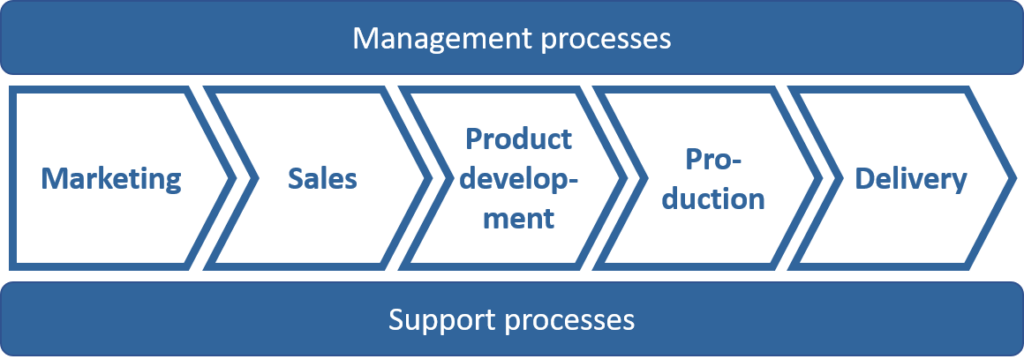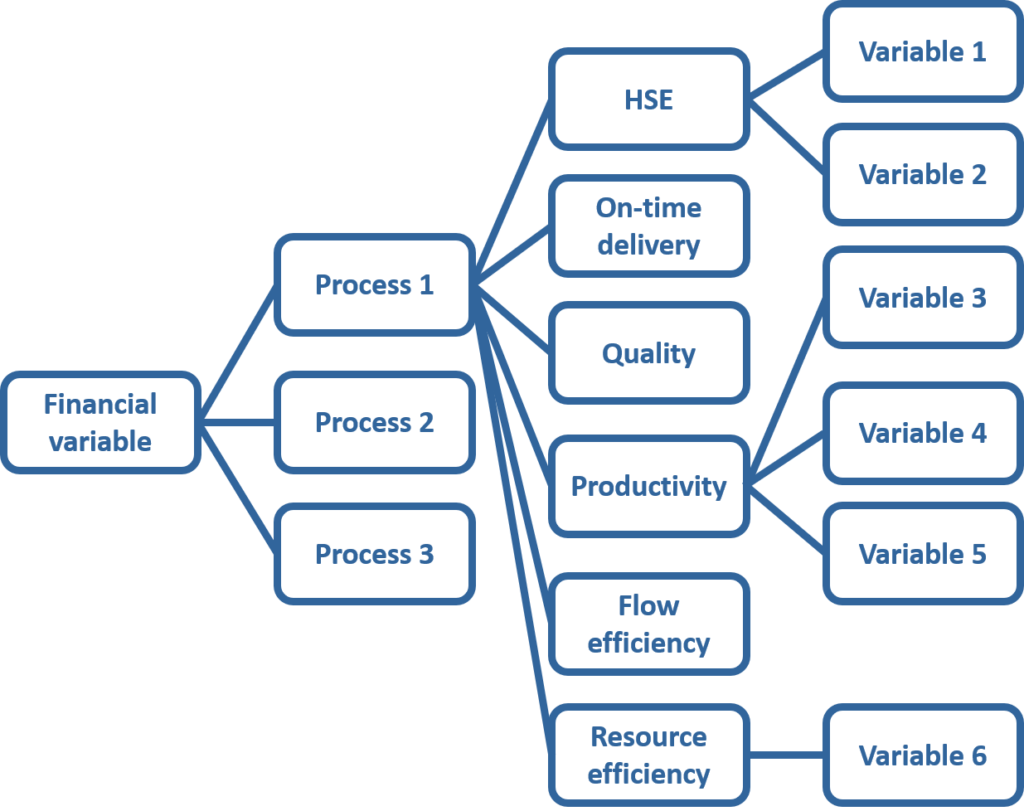

Many companies have ambitious growth and profitability goals. To achieve these goals, fact-based management is central. In this post we will show why.
Businesses create value for their customers and owners through their processes. The figure below gives a visual picture of the overall perspective of the business processes. The processes are often grouped into the categories main processes (arrows in the middle), management– and support processes.

To achieve ambitious financial goals, strategic development of the processes and their interfaces is required. An outstanding business ensures the most improvement and development of the processes for the resources it has at its disposal.
This requires hard prioritization based on insight into what needs to be developed and how much. Practicing fact-based management means that the company uses the facts to make these priorities. So how can you go about building fact-based insights?
The first step in building fact-based insight is to understand the relationship between overall financial variables and operational process variables. Examples of economic variables are turnover, operating profit and working capital.
The process variables are often grouped into the categories HSE, quality, on-time delivery, productivity, flow efficiency and resource efficiency. Thus, the business must be able to describe how the most important process variables affect (drive) the economic variables.
The figure below illustrates in a general way the link between economic variables, processes and process variables in the specified categories.

Let’s look at some examples of process variables under the different categories:
An outstanding company must also be able to describe how the process variables affect the profit and loss for products and services in an end-to-end life cycle perspective. This is because the company’s income and costs should be linked to the P&L as much as possible.
Fact-based insights into this dimension of the company’s financial performance are crucial to making the right strategic decisions.
The second step is to assess how much the prioritized process variables need to be improved to achieve the financial goals.
This relates to the importance of fact-based management to achieve the most strategic improvement possible for the company’s limited resources. The same “logic” also applies at the departmental level in day-to-day operations.
A great company has established committed structures that involve everyone in a planned, continuous effort to improve operational performance. Fact-based management means that managers at departmental level also use facts about local operational performance to prioritize improvement initiatives and resources.
Fact-based management naturally requires a comprehensive measurement system that allows for fact-based priorities at the enterprise, department, process and product levels. An appropriate measurement system is designed and implemented with insight into the implications for employees’ commitment, motivation, team spirit, openness, desire for sharing, collaboration and willingness to help.
Working on improving the company’s profitability in the short and long term requires targeted internal business development. In the sections above, we have given an introduction to why fact-based management is necessary to achieve the best possible result, i.e. return on the resources available to you in this work.
The company’s Business Improvement System (BIS) is a specification of how one implements the work on internal business development. If you have not already read about BIS, you can check out our post “Why choose Aksena’s Business Improvement System“.
You can also download our guide “How to Implement a Business Improvement System” to learn more about implementing a BIS through eight steps:


